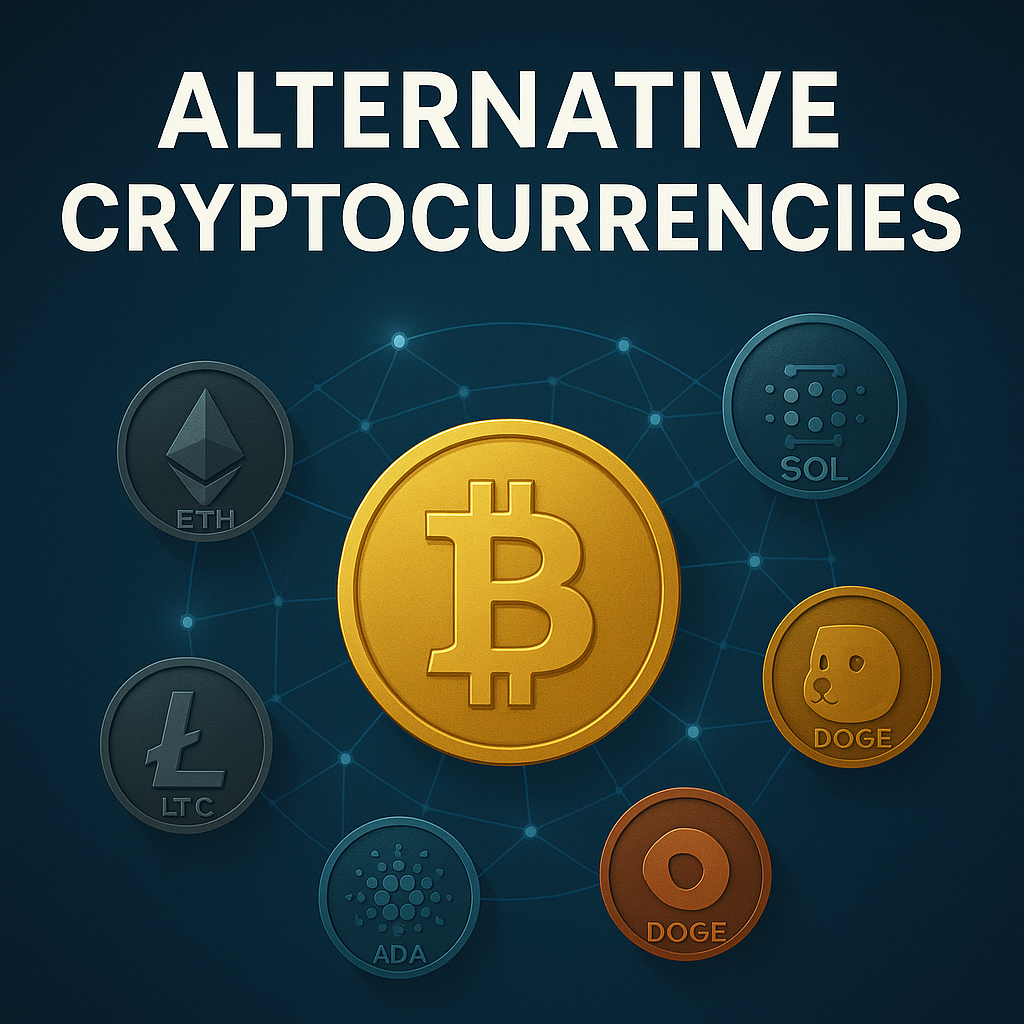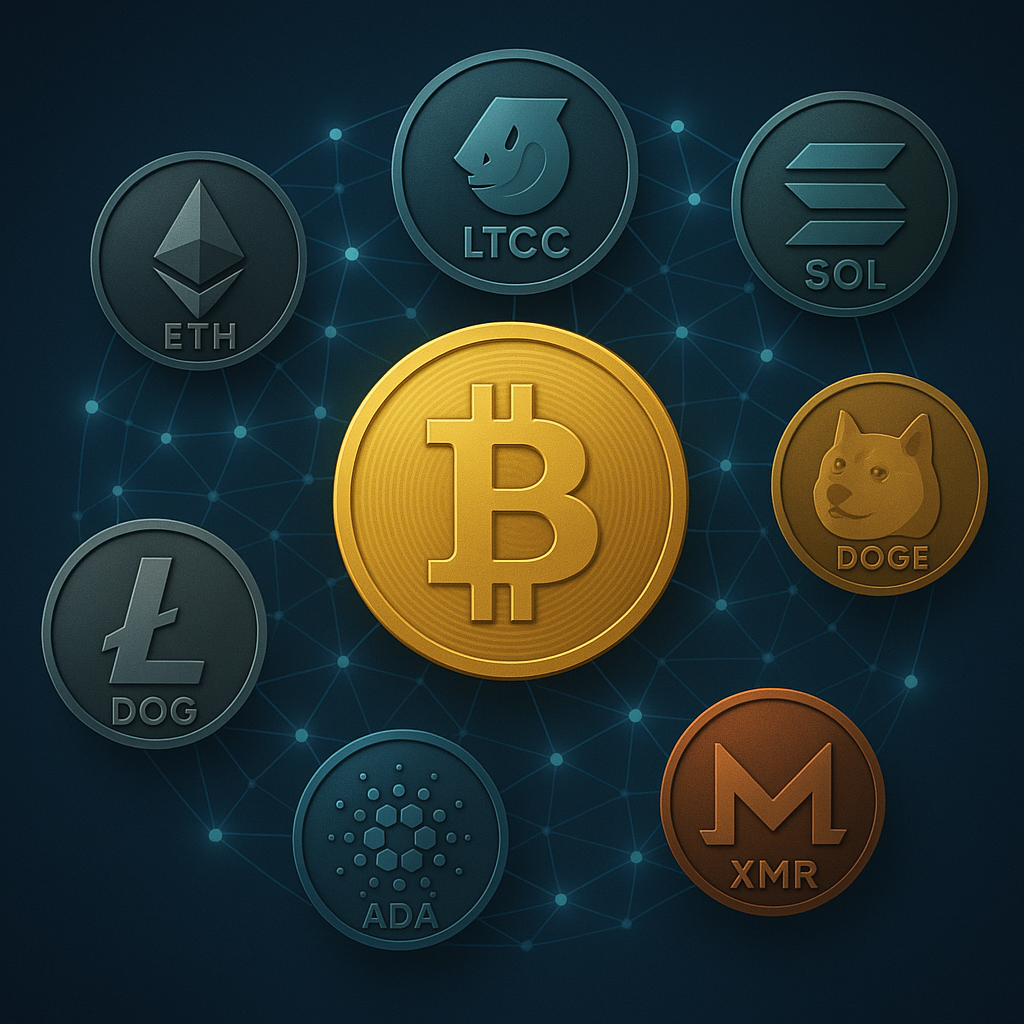Cryptocurrencies have taken the financial world by storm, but the question is, did you know that there are many other coins in the digital world besides Bitcoin, called altcoins (alternative coins), and they play an important role in the crypto ecosystem?
If you’re new to the world of cryptocurrencies, understanding altcoins can be difficult. This guide breaks everything down in simple, beginner-friendly terms, covering:
✔ What altcoins are and why they exist
✔ Different types of altcoins
✔ The pros and cons of investing in them
✔ How to buy and store altcoins safely
✔ Expert tips for smart investing
By the end, you’ll have a clear understanding of altcoins and whether they’re a good fit for your investment portfolio.
What are altcoins?
Definition: Any digital currency other than Bitcoin
Bitcoin (BTC) was the first digital currency, launched in 2009. Since then, developers have launched thousands of other currencies—collectively called altcoins.
Why were altcoins launched?
- Faster transactions (for example, Litecoin processes blocks four times faster than Bitcoin).
- Lower fees (Bitcoin can become expensive when demand is high).
- Smart contracts (Ethereum allows developers to build applications on its blockchain).
- Better privacy (Monero hides sender/receiver details).
- Specialized uses (some focus on gaming, social media, or artificial intelligence).
Types of Altcoins (with Examples)
Alternative cryptocurrencies exist in many forms. Here’s a breakdown of the most common categories:
1. Payment currencies (like Bitcoin, but faster/cheaper)
Purpose: Used for transactions (like digital money).
Examples:
Litecoin (LTC) – “Bitcoin’s silver to gold”; faster transactions.
Bitcoin Cash (BCH) – A Bitcoin split with larger blocks and lower fees.
2. Smart contract platforms (for DeFi, non-fungible tokens, and applications)
Purpose: Allows developers to build decentralized applications (DApps).
Examples:
Ethereum (ETH) – The premier smart contract platform.
Solana (SOL) – Ultra-fast, low-cost transactions.
Cardano (ADA) – Focuses on security and scalability.
3. Stablecoins (low-risk, pegged to real assets)
Purpose: Reduce volatility by pegging their value to the US dollar, gold, or other assets.
Examples:
Tether (USDT) – Reserve-backed (controversial but widely used).
USD Coin (USDC) – A more transparent and regulated alternative.
4. Privacy Coins (Anonymous Transactions)
Purpose: Hide transaction details to enhance privacy.
Examples:
Monero (XMR) – Untraceable transactions.
Zcash (ZEC) – Optional privacy features.
5. Meme Coins (Community coins, often a joke)
Purpose: Fun and widespread projects (some of which later gain real interest).
Examples:
Dogecoin (DOGE) – Started as a joke, now a top 10 cryptocurrency.
Shiba Inu (SHIB) – a “strong competitor to Dogecoin” with a strong community.
6. Utility Tokens (used in specific ecosystems)
Purpose: Supporting blockchain-based services (such as gaming and cloud storage).
Examples:
Filecoin (FIL) – Decentralized file storage.
Chainlink (LINK) – Connects smart contracts to real data.
Investing in Altcoins
✅ Advantages of Alternative Currencies
✔ High Growth Potential – Small altcoins can grow in value by 100x or more(unlike Bitcoin, which already has a huge capital base).
✔ Innovation – Many of them solve real-world problems (e.g., Ethereum for DeFi).
✔ Low Cost of Entry – Few cost money, making them accessible.
✔ Diversification – Spreading risk beyond Bitcoin.
❌ Risks of Alternative Currencies
✖ Extreme Volatility – Prices can drop by over 90% within weeks.
✖ Scams and Frauds – Many projects are either fraudulent or fail.
✖ Low Liquidity – Small altcoins are difficult to sell quickly.
✖ Regulatory Risks – Governments may ban some currencies.
How to buy altcoins safely.
Choose a reliable trading platform.
For beginners: Coinbase, Binance, Kraken (easy to use).
For advanced traders: Bybit, KuCoin (more altcoin options).
Create a cryptocurrency wallet
Hot wallets (for convenience): Trust Wallet, MetaMask.
Cold wallets (for security): Ledger, Trezor.
Raise funds and buy altcoins.
Deposit in USD, EUR, or Bitcoin.
Find an alternative currency (like Ethereum).
Place a market order or limit order.
Withdraw to your wallet for extra security.
Track and manage your investments.
Use CoinGecko or CoinMarketCap to monitor prices.
Place stop-loss orders to limit losses.
5 Expert Tips for Investing in Altcoins
- Start with popular altcoins (Ethereum, Solana, Cardano) before taking the plunge.
- Do Your Own Research (DYOR) – Review whitepapers, team, and case studies.
- Avoid Fear of Missing Out (FOMO) – Most meme coin crashes.
- Diversify your investments – Don’t invest everything in one altcoin.
- Use Dollar Cost Averaging (DCA) – Make regular small investments to reduce risk.
Are altcoins worth investing in?
Altcoins offer promising opportunities, but they come with high risks. If you’re new:
- Start with Ethereum or Solana (more stable).
- Avoid small, random coins (most fail).
- Never invest more than you can afford to lose.
The cryptocurrency market is volatile, but it’s full of potential. With education and wise investment, you can manage Alternative cryptocurrencies successfully.
Altcoins are very interesting in the cryptocurrency space, but they are not risk-free. If you want to get started, start systematically, do thorough research, and don’t waste your money on Lucy’s advice. Also, learn risk management, adopt all strategies, work hard, and always stay positive. With this, you will become a bigger and smarter investor.

